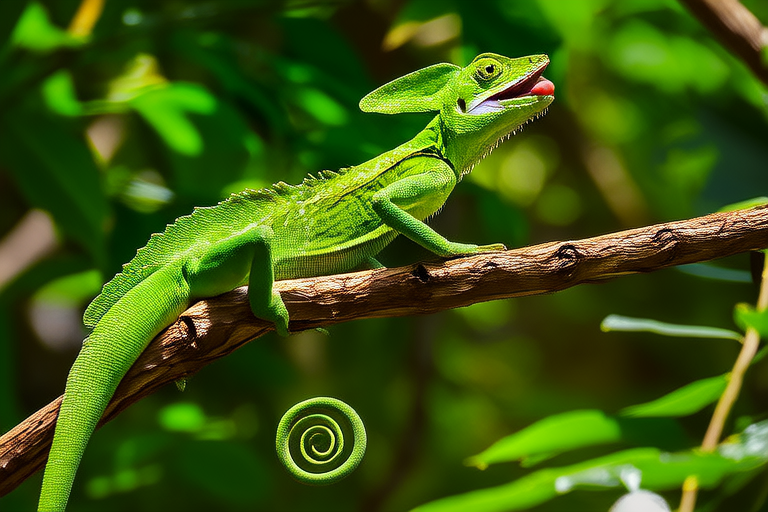The Ultimate Guide to Feeding and Caring for Your Chameleon
Chameleons are fascinating creatures that have captured the hearts of many reptile enthusiasts with their unique appearance and behaviors. However, caring for these exotic pets requires careful attention to detail to ensure they thrive in captivity. This guide will walk you through everything you need to know about feeding and caring for your chameleon, from understanding their dietary needs to setting up the perfect habitat.
Diet Specifics: Types of Insects and Nutritional Supplements
Feeding your chameleon correctly is crucial for its health and longevity. In the wild, chameleons are insectivores, meaning their diet consists primarily of insects. Common feeder insects include crickets, dubia roaches, silkworms, and hornworms. Each type offers different nutritional benefits:
- Crickets: A staple food, providing a good balance of protein and calcium.
- Dubia Roaches: Rich in nutrients and easier to digest than crickets.
- Silkworms: High in calcium and low in fat, making them ideal for younger or growing chameleons.
- Hornworms: Excellent for larger chameleons due to their size and nutrient content.
In addition to live prey, it’s essential to supplement their diet with calcium and multivitamins. Dusting insects with calcium powder and a multivitamin supplement before feeding ensures your chameleon gets the necessary nutrients. Over-supplementation can lead to health issues, so follow the manufacturer’s instructions carefully.
Feeding Frequency
Young chameleons require more frequent feedings, typically three to five times a week, while adults need fewer meals, usually two to three times a week. The amount of food depends on the chameleon’s size and age. Always offer a variety of appropriately sized insects to mimic the diversity found in nature.
Habitat Setup: Enclosure Size, Lighting, Temperature, Humidity Requirements
Creating an environment that closely resembles the chameleon’s natural habitat is vital for its well-being. Start by choosing the right enclosure size; adult chameleons need at least 3 feet in height and width. A larger space allows for proper climbing and exploration.
Proper lighting is essential for both heat and UVB exposure. Install a basking lamp and a full-spectrum UVB light source. The basking spot should reach around 90°F (32°C), while the cooler side of the enclosure remains between 75°F and 85°F (24°C to 29°C). Ensure there are multiple branches and perches at various heights to encourage climbing and basking behavior.
Maintaining appropriate humidity levels is also important. Chameleons need a humidity range of 50% to 70%. Achieve this by misting the enclosure daily and ensuring there’s a water dish for drinking. Some chameleons may prefer to drink droplets from leaves rather than directly from a bowl.
Health Monitoring
Regular health checks are necessary to catch any potential issues early. Monitor your chameleon’s appetite, activity level, and overall appearance. Signs of illness include lethargy, loss of appetite, weight loss, and changes in coloration or shedding patterns. If you notice any concerning symptoms, consult a veterinarian specializing in reptiles immediately.
Common Diseases and Prevention
One of the most common health issues in chameleons is metabolic bone disease (MBD), which results from calcium deficiency. Prevent MBD by providing adequate calcium supplementation and ensuring proper UVB lighting. Other prevalent conditions include respiratory infections, caused by poor ventilation or incorrect humidity levels, and parasites, often introduced through contaminated food.
To prevent diseases, maintain a clean habitat, quarantine new additions, and handle your chameleon gently. Regular veterinary check-ups help detect problems before they become severe.
Maintenance Tips
Maintaining your chameleon’s enclosure involves regular cleaning and substrate replacement. Remove uneaten food and waste promptly to avoid contamination. Replace substrate every few weeks or sooner if it becomes soiled. Clean all surfaces with a reptile-safe disinfectant and rinse thoroughly.
Handling your chameleon carefully minimizes stress and injury risks. Support its body fully when holding, avoiding sudden movements. Limit handling sessions to avoid stressing the animal, as excessive handling can disrupt its natural behaviors.
By following these guidelines, you can provide a healthy and stimulating environment for your chameleon, allowing it to live a long and happy life. Remember, each chameleon has unique needs, so observe your pet closely and adjust care accordingly. With dedication and proper care, you’ll enjoy years of companionship with your colorful friend.
